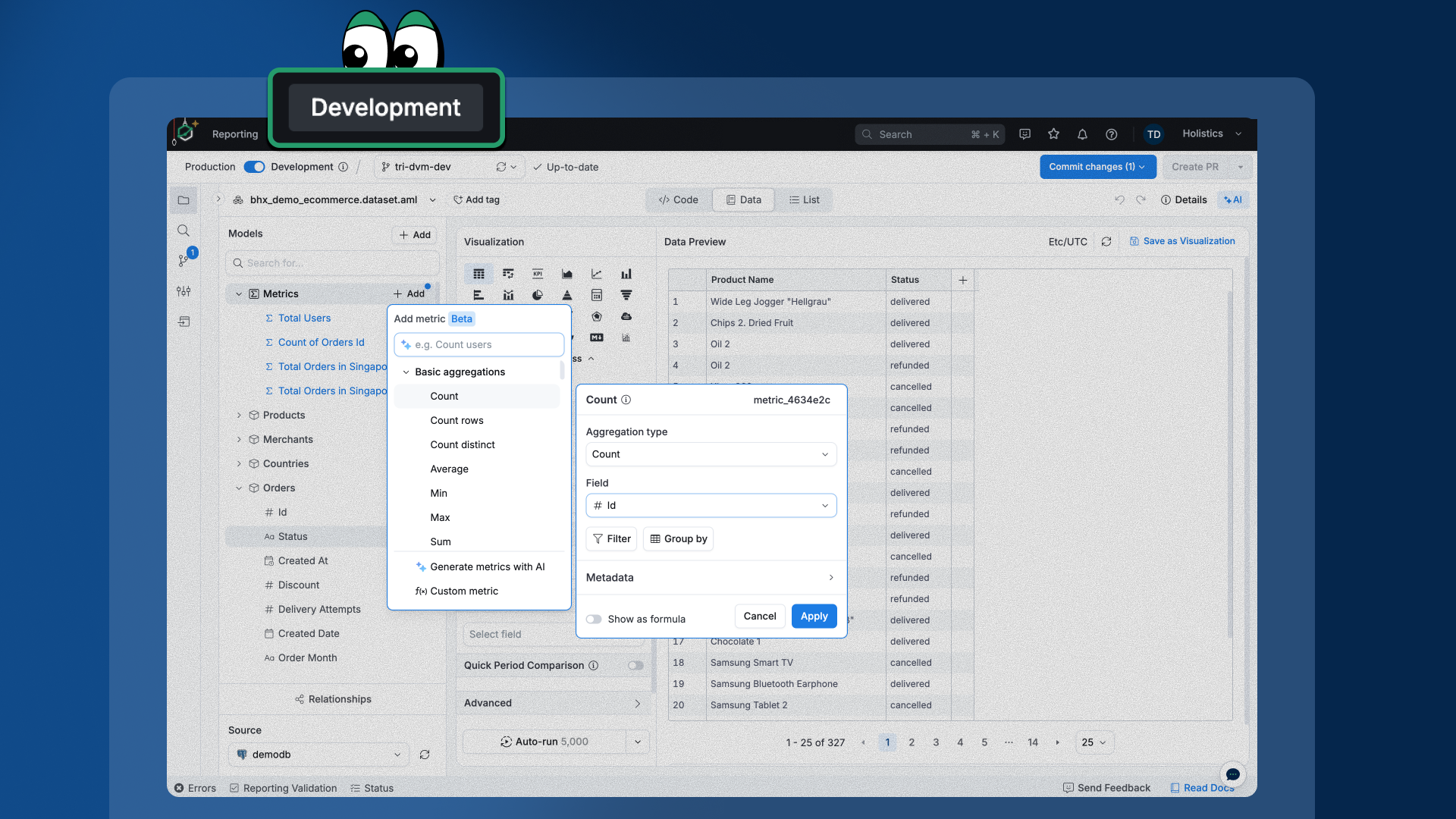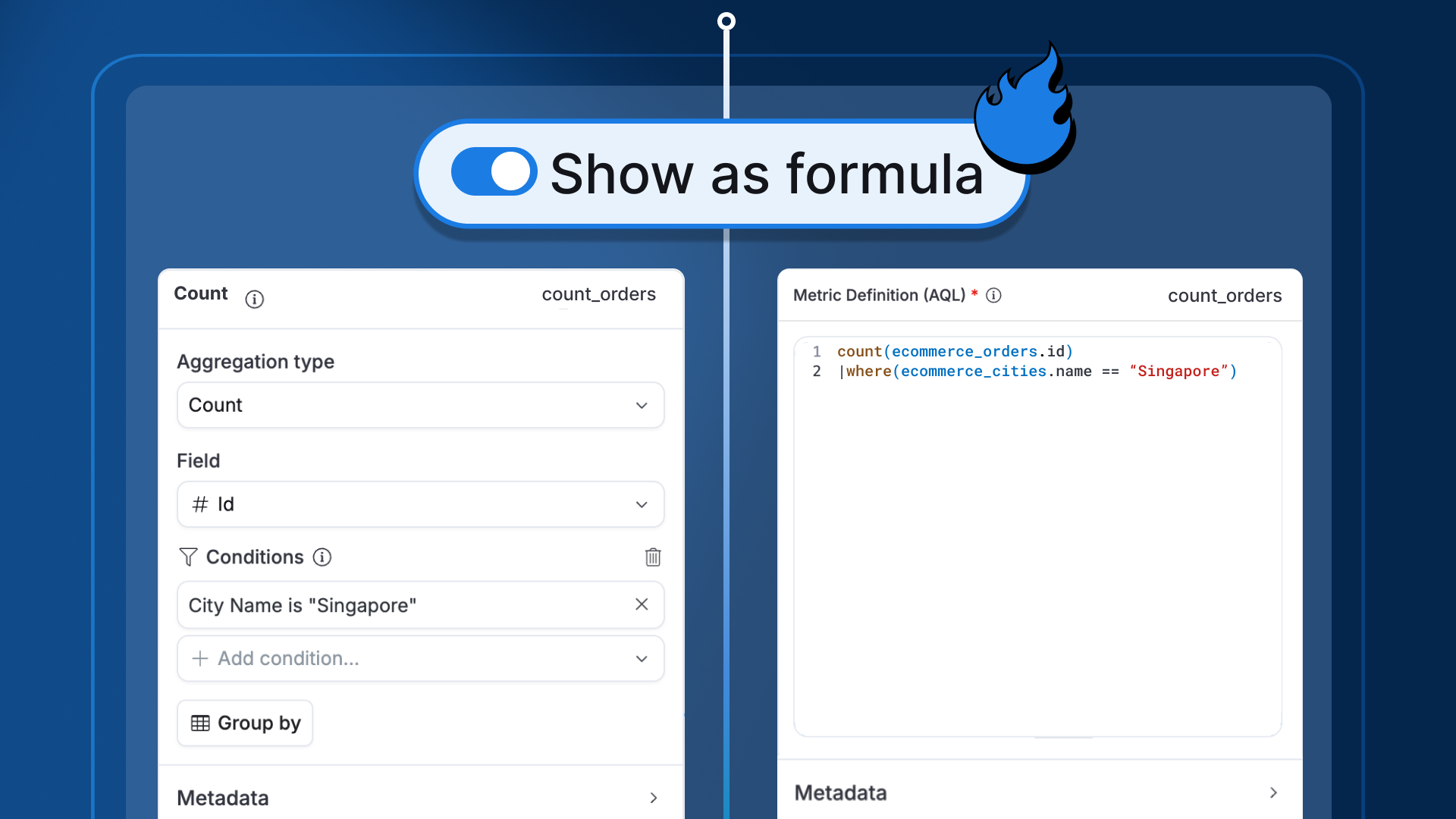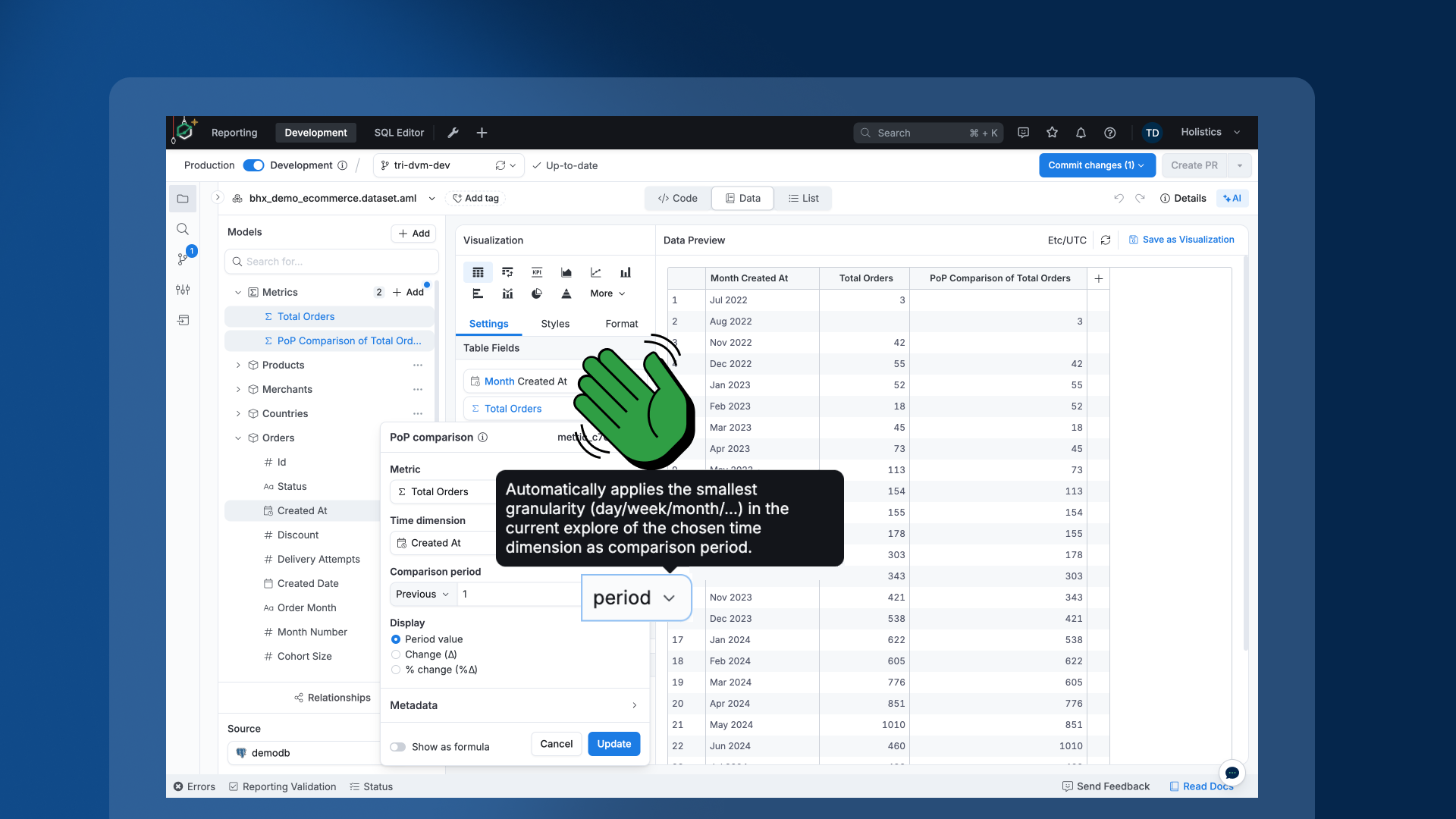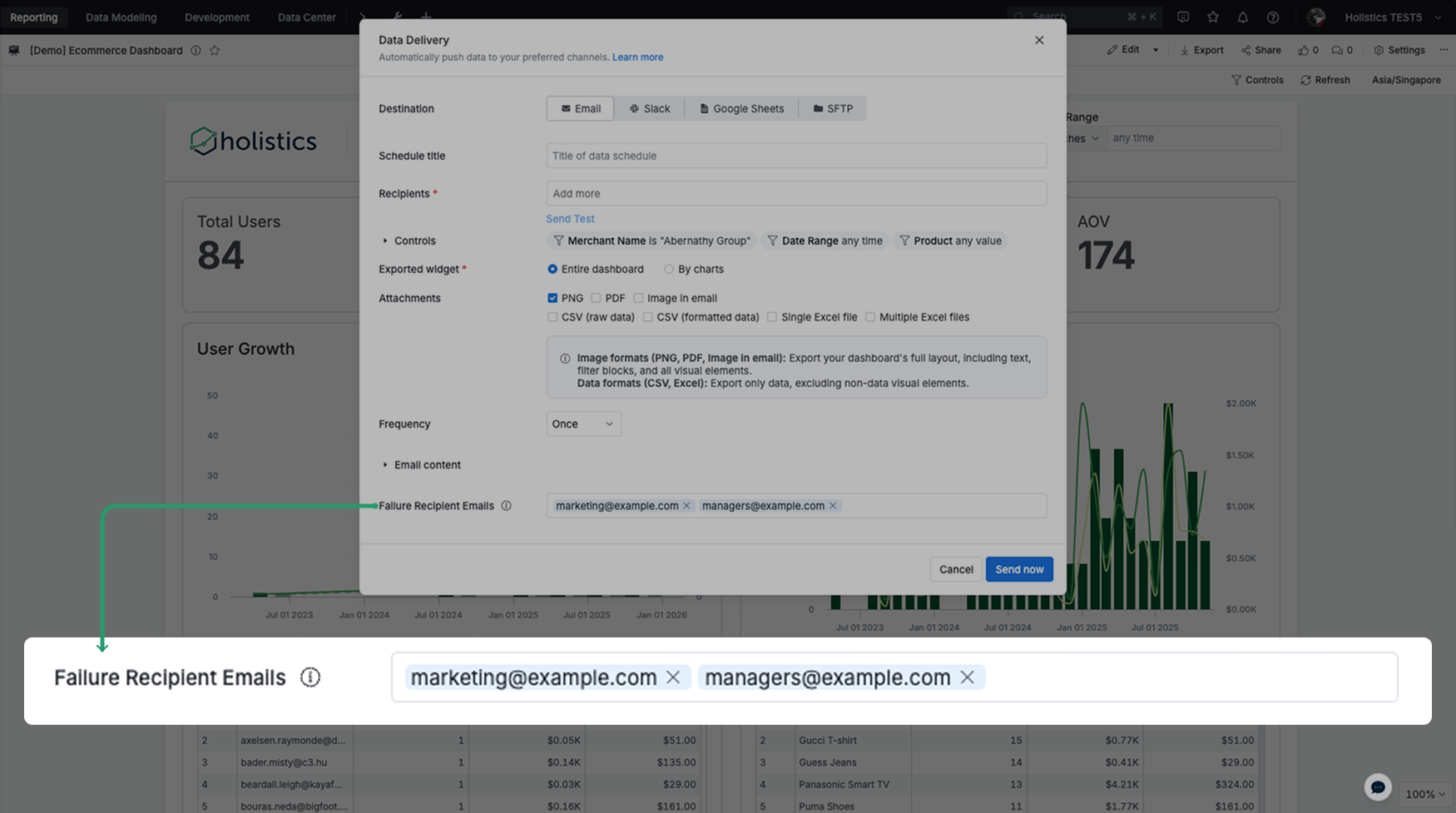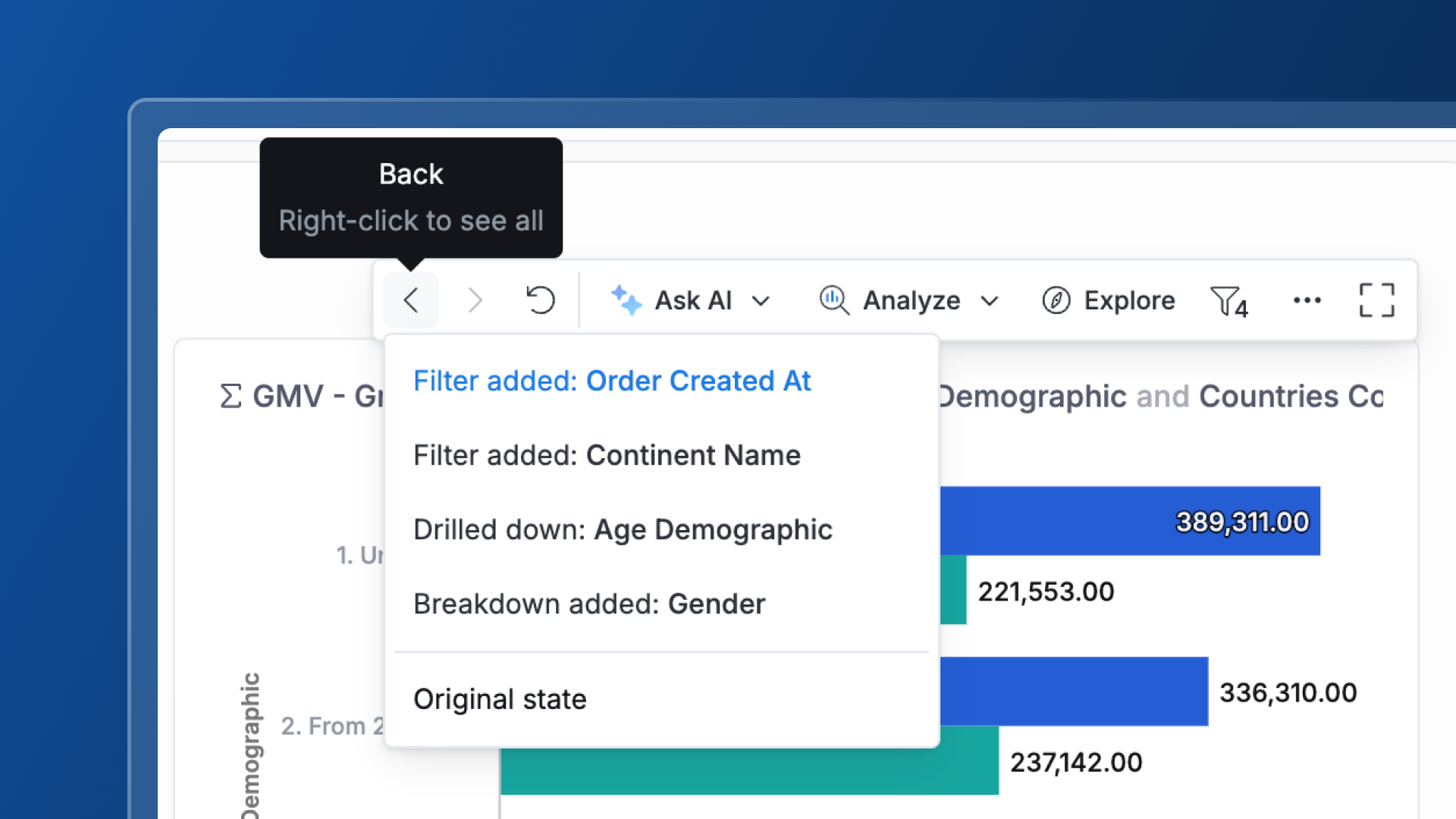Quick filtering in Canvas Dashboard
We're thrilled to announce that we're bringing more direct interaction to our dashboards with Quick Filtering. Instead of using the filter toolbar, you can now filter, include, or exclude data points directly from the charts and tables.
🌟 What's New
With Quick Filtering capabilities, you can just right-click any data point or visualization component to filter your entire view.
Right-click to include/exclude
Remove unusually high or low values that might skew your analysis with exclude, or spotlight specific subsets by including them. You can do this by right-click on x-axis or legend that contain the dimension value.
Or by right-click on rows header of table / pivot table
Right-click to apply Top N / Bottom N filter
Focus on the highest or lowest ranking values with just a few clicks. You can do this by right-click on any legend that display your metric name.
Or by right-click on column header of table /pivot table
Right-click to filter by data value
Filter "greater than" or "less than" value directly from the chart. You can do this by right-click on any data point. Example scenarios
- Outlier detection: You notice one sales rep with exceptionally high revenue and want to see who else exceeded the same target.
- Benchmarking: You want to see which sales reps generated revenue above the average so you can recognize and celebrate their performance.
Or right-click on value cell of a table
